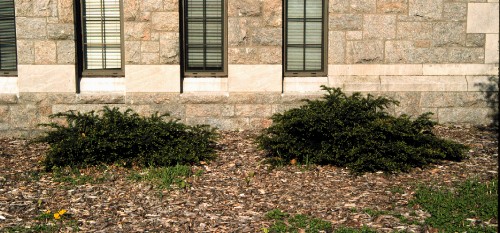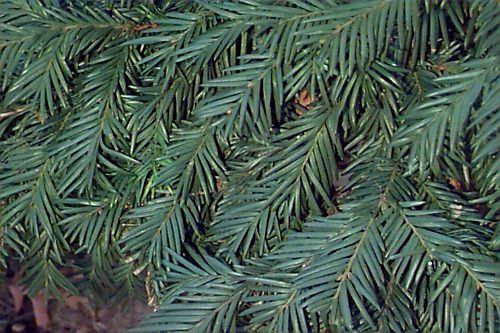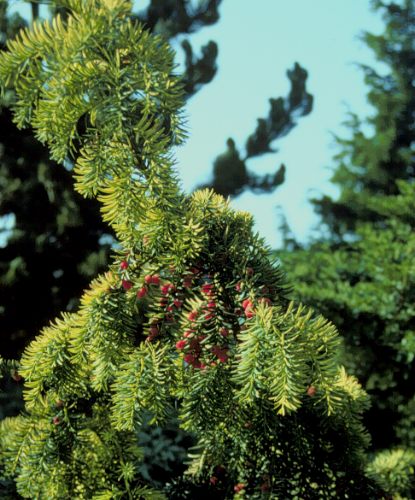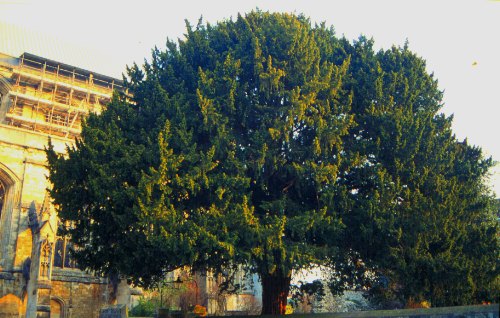Taxus baccata
Repandens English Yew
Taxaceae
ExpandHabitat
- native to Europe and northern parts of Africa
- zone 6, zone 5 in protected sites
Habit and Form
- large evergreen shrub or small tree
- 30' to 50' tall and 20' wide
- wide spreading, dense branches
- dark green color
- medium texture
Summer Foliage
- spirally arranged needle-like leaves, appears to be two-ranked if grown in shade
- 0.5" to 1.25" long and up to 0.25" wide, convexed and has a prominent midrib
- dark green color to leaves
- leave apex has a horny point
- stems have brownish scales at base
Autumn Foliage
- no fall color, evergreen
Flowers
- not ornamentally important
- dioecious
Fruit
- solitary seeds, slightly compressed, round and flessy, red
Bark
- flakey, furrowed reddish brown bark
- older trunks are fluted
Culture
- pH adaptable
- prefers moist, well-drained, soil
- does well in sun or shade
- keep out of windswept sites
- does not like extreme cold or extreme heat
- transplants easily
Landscape Use
- for parks
- gardens
- in shade
- cultivars can be used as understory shrubs
- hedges
- screens
- in groupings or mass plantings
- topiary
- decoration
Liabilities
- toxic
- not as cold hardy as other Taxus
- strong winds can cause desiccation in winter months
- Taxus scale
- mealybugs
ID Features
- dark green needles that end in a horny tip
- wide spreading branches with spirally arranged needles
- brown scales in stems
- reddish brown flaking bark
- red fleshy seeds
Propagation
- cuttings root easily
- seed propagtion can be done but is seldom used
Cultivars/Varieties
Various fastigiate and tree-like forms are commonly grown, but these plants are not well adapted to the New England climate. Those listed can be grown successfully into USDA zone 5.
'Adpressa Fowle' - This slow-growing plant was discovered by a Massachusetts nursery and appears to express tolerance for southern New England winters. It is a compact, mounded plant with short, thick dark green needles. It grows much wider than tall in time. This plant is also occasionally grafted to a standard to form a small tree.
'Repandens' -This is the most cold hardy form in common cultivation, probably due to genetic factors and the low habit that places much of the plant under snow cover in some winters. It is a low, spreading plant that seldome exceeds 4' tall, but may spread to 15' across in time. The tips of the branches are pendulous, while the lustrous green foliage in long and gradually tapers to a point.







